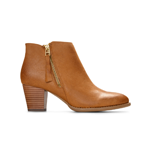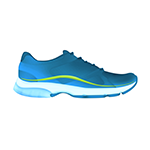
HOW SHOULD SANDALS FIT?

Do you live somewhere that has distinct seasons? If so, you might find yourself counting down the days until sandal season each year. Slipping into a pair of comfortable walking sandals can be a freeing experience, especially if you’ve been wearing ankle boots, sneakers, or other closed-toe styles all winter.
Summer is the time to let your feet take a breather. And yet, if your sandals don’t fit right, you’ll be left with chronic discomfort, pain, or other unfortunate foot conditions. Whether you’re busting out the slides, flip flops, and wedge heels from the back of your closet or thinking about shopping for a new pair, proper fit is essential.
So, how should sandals fit? As a leading supplier of innovative, orthotic footwear, Vionic specializes in helping people find comfortable shoes that fit properly, including comfortable men’s sandals and women’s sandals. We’re dedicated to providing our customers with the tools they need to find their perfect pair of shoes. Keep reading to learn how sandals should fit and how to shop for the right pair.
How Sandals Should Fit
While it’s important to avoid shoes that are too loose on your feet, there’s a good chance you could stand to go up at least a half size with your sandals. As we mentioned, your whole foot should sit within the sole of your sandals when you stand upright [3].
Signs your sandals are too small include:
- Your heels protrude over the back
- Any of your toes extend or hang over the front
- Your toes extend or hang over the soles on either side
- The straps dig into your heels, toes, or any other part of your foot
- You have the straps adjusted to the largest setting
- You get blisters, calluses, ingrown toenails, or heel spurs
- Your feet hurt during or after wearing them
Of course, loose-fitting shoes can cause a number of foot problems, such as tripping and blisters [1]. But as we noted, this is pretty uncommon with sandals.
How Should Sandals Fit in the Back and Front?
When it comes to sandals and flip flops, the way they fit in the back and front is crucial. If your heels extend past the soles in the back, the straps will likely cut into your skin, which can be painful and restrict circulation. Additionally, a portion of your foot won’t be protected by the sole. The same goes for your toes in the front. Without that added protection, it’s only a matter of time before you injure your toes. If you’re wondering, are flip flops bad for your feet? Well, the answer is yes, if you aren’t wearing flip flops that fit correctly.
At this point, you know the perimeter of your foot shouldn’t go past the sole on any side. However, the space on each side won’t be exactly even all the way around. For example, there might be an eighth of an inch of space around your toes and a quarter inch around your arches. Not only that, but you can expect this to change throughout the day as your feet expand, as you transition from standing to sitting, and overtime as you break in a pair of sandals [2].
Don’t Fear a Larger Sandal Size
Many assume that wearing a larger shoe size will make their feet look bigger, but this couldn’t be further from the truth. When you cram your feet into sandals that are too small, they can actually appear larger. And believe it or not, the difference between two whole sizes is only about one-third of an inch. Half sizes and whole sizes only differ by roughly one-fifth of an inch in length [5].
Going up a size (or half a size) with sandals will provide you with adequate wiggle room. Of course, you don’t want too much wiggle room, but that extra third or fifth of an inch will go a long way. You’ll be able to walk around comfortably for hours on end while avoiding foot pain and discomfort.
Finding Your Correct Shoe Size and Width
As mentioned, when sandals are too small, the straps can dig into your feet, and you might end up with a stubbed toe, an ingrown toenail, or another painful condition. Conversely, while it may be better to go with a larger pair of sandals, sandals that are way too large present their own list of foot problems. Your feet can slip around in the shoe, which may strain your ankles and calves and impact your posture. Loose shoes can also slide off your feet and cause an injury or rub on your skin, which may lead to blisters and calluses [1].
That being said, a 2018 study published in the Journal of Foot and Ankle Research found that wearing shoes that are too small is much more common than wearing a pair that’s too big [4]. To find sandals that are good for your feet and fit correctly, you’ve got to measure your feet.
Measuring Your Feet for Sandals
If you’ve measured your feet in the past or think you know your shoe size, we still suggest measuring every so often. According to the Journal of Foot and Ankle Research, as many as two-thirds of people wear the wrong size [4]. This includes improper shoe length and width, so measuring both is crucial.
When you measure your feet for sandals, we recommend doing so in the evening [5]. This is because feet tend to expand throughout the day, which can often result in different measurements at night than in the morning. Do you ever think your shoes fit better in the morning? This is the reason.
To find your shoe size and width:
- Grab a measuring tape or yardstick, a pen, and a large piece of paper.
- Place the paper on your floor—preferably the flattest area you can find—and step onto it.
- Slowly trace the perimeter of each foot. Bear in mind that when you wear sandals, the entire perimeter should fit inside the sole [3]. To get the right size, make sure you can see the whole outline of each foot when you look down.
- Using your measuring tape or yardstick, carefully measure the length and width of your feet, and record the numbers [5]. (The length is measured from the tip of your longest toe to the edge of your heel, and the width is a straight line between the broadest section of your foot.)
If one of your feet is longer or wider than the other, measure again to make sure. But don’t be alarmed if one is a half size or so larger than the other, as this is very common. To get your current shoe size and width, compare your measurements to a size chart.
Have you been wearing the wrong size? Don’t be too hard on yourself. Moving forward, just be sure to only buy shoes in the proper size, and measure your feet again every few years.
Prioritize Comfort and Arch Support
While the most important thing is getting the right size and width, you’ll want to find a pair with a comfortable footbed and arch support.
One of many sad truths in life is when you realize that the stylish sandals you bought hurt your feet. We’ve all been there—it’s easy to throw comfort aside in the name of fashion. But in all reality, you don’t have to! You can rock chic sandals with arch support and contoured comfort, all hidden within the shoe.
Vio-Motion Support
Every pair of Vionic shoes features our exclusive, cutting-edge Vio-Motion Support technology. What this means is that biomechanical arches, contoured heel seats, and comfy, cushioned soles are embedded into each shoe. The best part is that our innovative orthotics are completely concealed.
Many Vionic sandals carry a Seal of Acceptance from the APMA (American Podiatric Medical Association). This certifies that they’re designed with substantial support and provide foot health benefits.
Vionic sandals and shoes are designed to prevent:
- Plantar fasciitis
- Morton’s neuroma
- Overpronation
- Heel spurs
- Chronic heel pain
- Blisters and calluses
- Ingrown toenails
- Stubbed toes
- Injuries caused by ill-fitting footwear
In a peer-reviewed study, participants with heel pain who wore Vionic contoured sandals for 12 weeks experienced more pain relief than those who wore standard flip flops. Not only that, but Vionic sandals were shown to provide as much relief as our best-selling arch support inserts. In other words, if you need orthotics, you aren’t stuck with closed-toe shoes and inserts. You can wear sandals, too!
Women’s and Men’s Orthotic Sandals from Vionic
This summer, don’t deprive yourself of properly fitting sandals. And on that note, you don’t have to deny yourself of fashionable footwear, either. The orthotic collections from Vionic include stylish, flattering sandals for women and men. When you browse our selection, you’ll find comfortable shoes for work, the beach, brunch, barbecues, fancy events, vacation, and anywhere else you’re headed.
This includes supportive flip flops with iconic silhouettes, platform espadrilles and wedge heels with arch support, ankle-strap sandals, comfortable slides, and toe-post sandals. To accommodate a broad array of feet, we offer whole and half sizes, as well as medium and wide width shoes.
You shouldn’t walk around with unprotected feet this season, even if your toes will be feeling the breeze. With the right sandal size and width, you’ll feel comfortable, confident, and ready for any activity and occasion.
Are you ready to take your sandal-wearing experience up a notch? Shop women’s and men’s sandals and flip-flops from Vionic today. For style tips like how to wear gladiator sandals or additional foot health information, check out our Healthy Footnotes blog!
Sources:
1. https://www.leaf.tv/articles/how-are-sandals-supposed-to-fit/
2. https://www.wikihow.com/Make-Sandals-Comfortable
3. https://www.streetdirectory.com/travel_guide/34765/shoes/how_to_choose_a_good_fitting_womens_sandal.html
4. https://jfootankleres.biomedcentral.com/articles/10.1186/s13047-018-0284-z
5. https://www.whowhatwear.com/how-to-find-shoe-size










